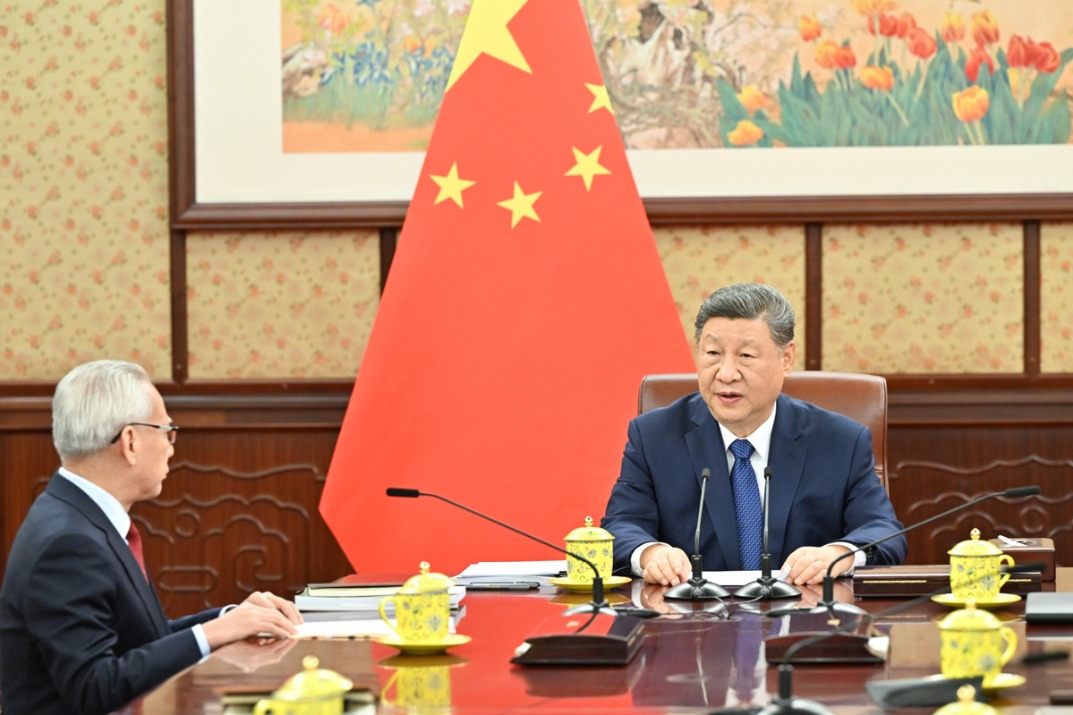Keeping fit means healthy profits

When Brazilian Neymar made headlines recently after becoming the world's most expensive soccer player, in a transaction worth 222 million euros ($265 million; £205 million), it highlighted once again that, when all is said and done, big sports are big business.
Even if Neymar's soccer skills are beyond doubt, that huge amount essentially reflects the value put on him as a marketing tool.
In a highly popular recent TV drama in China, The First Half of My Life, Tang Jing, who played one of the show's heroines, helped forge her on-screen persona by being portrayed following a daily fitness routine wearing a popular brand of sportswear.
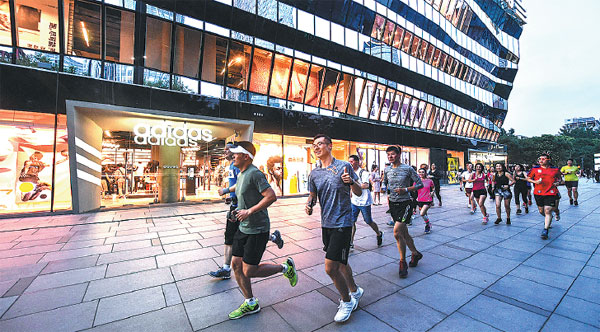
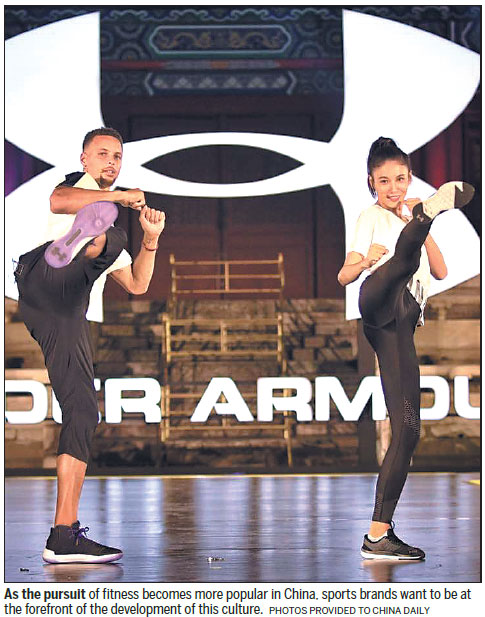
While Neymar and others in top-league competitive sports grab headlines because of the huge sums of money they command, it is the likes of Tang who are the front-line marketeers as multinational corporations fight for the huge revenues at stake in the world of sports and personal fitness.
In this campaign - which is so pervasive it is hard to escape if you read newspapers or magazines, watch films or TV or spend a lot of time on the internet - their mission is to convey the message that being fit and being trim is not only good for your health, but is also cool and is a mark of success.
At stake in China is a personal fitness market that the marketing consultancy Euromonitor reckons has almost doubled over the past five years. The value of sales of sports clothing alone was 187 billion yuan ($28.2 billion) last year, 11 percent higher than the year before, it says.
China's national fitness plan, administered by the State Council, forecasts that by 2020, spending related to sports will be worth 3 trillion yuan, making it a major new driver for domestic consumption.
Indeed, China is one of the fastest-growing markets for international brands such as Nike, Adidas and Puma, whose profits are swelling as more people engage in sports. Adidas held an event called Republic of Sports in Beijing recently, in which hundreds of people took part in the national fitness campaign. An indoor venue has been put up to provide sports and fitness experience for visitors.
"We have the ambition to become the number one sports brand in the world and in China," says Marc Le Roux, vice-president of sports performance for Adidas China.
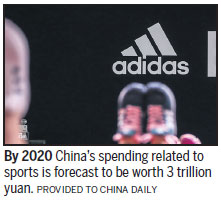
"If we want to achieve this goal, we need to engage people to do sports with us. It's not only about advertising and sponsoring the big teams; it's also about providing opportunities for everyday people to engage in sports and exciting sporting activities.
"The sports culture is really growing in China, and as a leading sports brand, we want to be at the forefront of the development of this culture. That's why we are creating the biggest sports activation that has ever been delivered by a sports brand in China."
More than 100,000 people took part in sports activities with the brand within six weeks recently in Beijing, Shanghai, Chengdu and Guangzhou. The passion for sports has developed rapidly in the country over the past few years, Le Roux says.
"Wherever I travel, in places like Shenyang, Kunming, Chengdu, Guangzhou or Beijing, I see that everywhere the passion and love for sports is growing immensely. We see more people running in the streets, going to the gym, and we see an amazing interest in football.
"I believe this is only the start. China has great people and a great culture, which is very competitive. I believe with the right level of creativity, this nation will become a leading sporting nation. This is why we promote creativity in sports, because we think this will make a difference in the future for Chinese athletes."
It is important to make these activities attractive so the interest they stir in people is not just a flash in the pan, he says.
"For people that start practicing sports, creativity is very important. We know that if we do sports, if we swim, if we run, it can be boring at times because it's very repetitive. If you don't bring a bit of creativity, you will lose interest, so by adding creativity in the sports you practice, you keep the interest going and it pushes you to the next level."
Experiential marketing has become more significant for all brands.
Only 10 years after the South Korean sports brand Kolon Sports entered the Chinese market, it has 230 stores in China. The company, which founded a hiking school to cater to the rising number of outdoor enthusiasts, focuses on sports jackets, says Park Chang Yong, Kolon's vice-president.
New entrants
While Nike and Adidas remain the most popular sports brand in China, new brands are also doing well.

Since the US brand Under Armour entered the China market in 2011, it has enjoyed huge, consistent growth, its sales figures more than doubling every year, it says.
It now has 179 new stores in 19 new cities and says it expects this to increase to 473 stores in 79 cities by the end of this year. It recently opened the Hangzhou Kerry Center store, its biggest brand house in China.
The label is now capitalizing on tremendous opportunities in e-commerce. In addition to official online shops on the mainland and in Hong Kong and Taiwan, it has opened stores on TMall.com and JD.com.
"We're happy to see that more and more consumers are making sports and fitness an essential part of their lives," says Erick Haskell, managing director of Under Armour Greater China and Korea.
"The consumer understands that different sports and activities require different, specific gear, and their buying trends reflect that new knowledge.
"Chinese consumers, while interested in the performance benefits of specific products, are also very focused on the design, style and fit of a specific product. Therefore, our goal is to market these aspects of the product prominently through both our in-store and online shopping experience. We've been optimizing our products and shopping experience in compliance with the demands and preferences of local consumers."
Opinion leaders
Shoppers are now greatly swayed by social media, so-called key opinion leaders and young celebrities, and the brands are taking full advantage of their own social media accounts, as well as those of athletes, influencers, artists and key opinion leaders, he says.
"In addition to building highly technical gear, we focus on consumer touch points such as grassroots events and social media to communicate directly with our core consumers."
The brand also provides customers with the chance to interact with top sportsmen and sportswomen with events such as the Stephen Curry Tour, the 2016 Michael Phelps China Tour and the 2017 Tom Brady China Tour.
Kolon Sports has signed Tang Wei and Song Joong Ki as brand representatives to reach out to the young generation. The brand is also looking for collaboration with designers.
Puma has worked with the singer Rihanna, and industry observers say she has added zest to the brand. Its collection Fenty X Puma, whose marketing the singer was closely associated with, has become one of the most sought-after on the market.
Wearable devices have become sales winners for international brands, too. Last year, Nike put on the market its Hyper Adapt Trainer 1.0, billed as the first shoes that can tie themselves. Puma also has its own self-lacing sports shoes, called Autodisc, and Decathlon has developed sports underwear that can detect the wearer's heartbeat.
sunyuanqing@chinadaily.com.cn
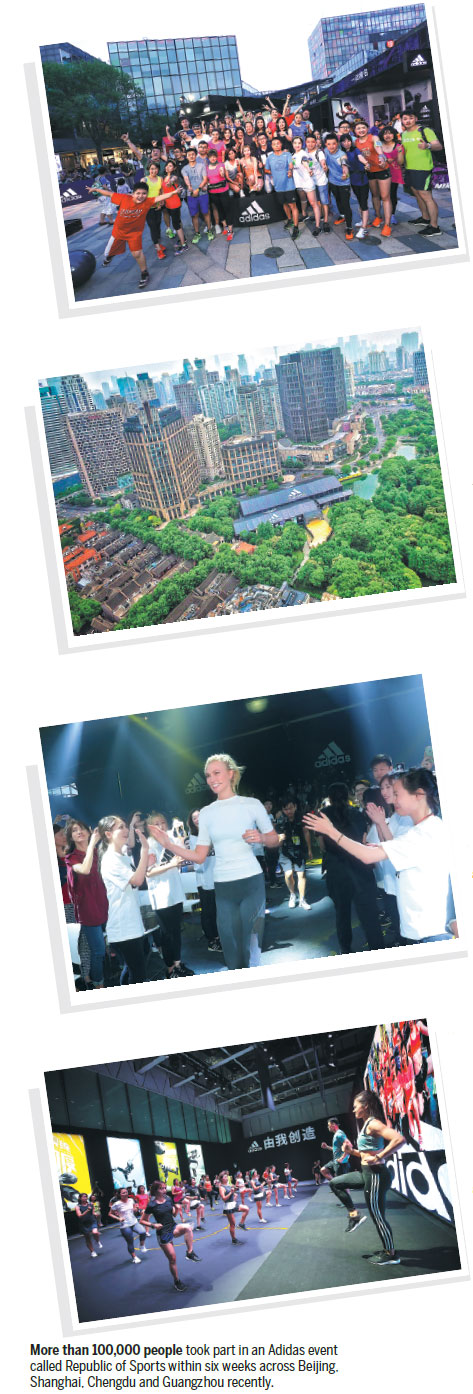
(China Daily Africa Weekly 09/01/2017 page1)
Today's Top News
- China accelerates push for autonomous driving
- Opening of new gateway can help foster global economic and trade cooperation
- The farmer, the snake and Japan's memory hole
- Crossing a milestone in the journey called Sinology
- China-Russia media forum held in Beijing
- Where mobility will drive China and the West





















